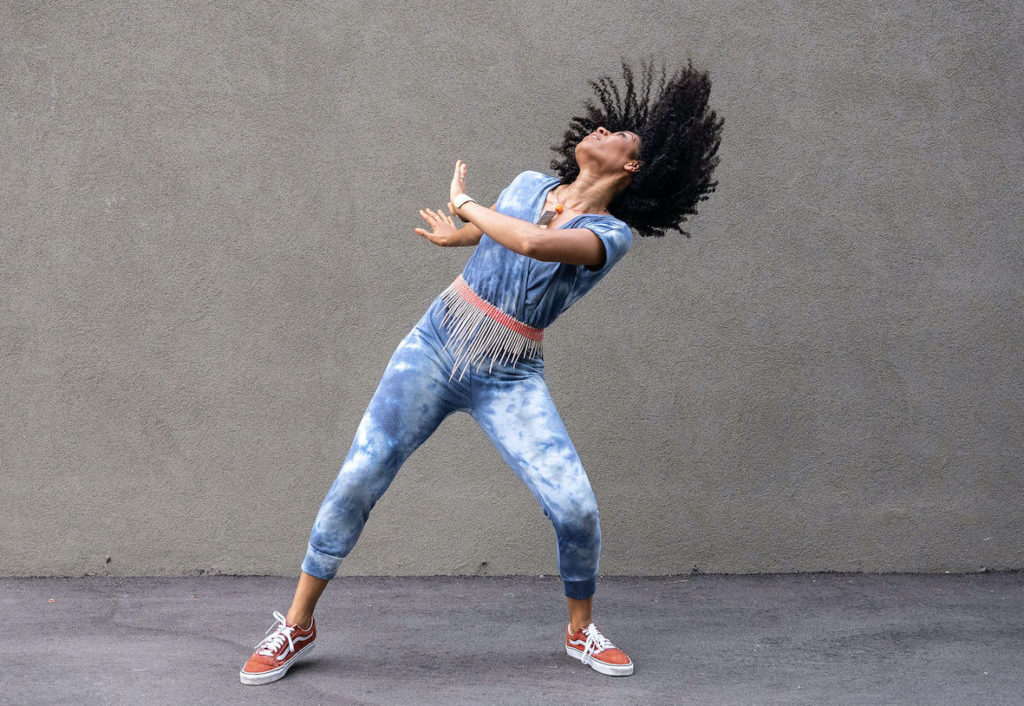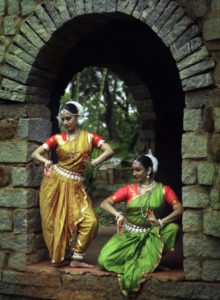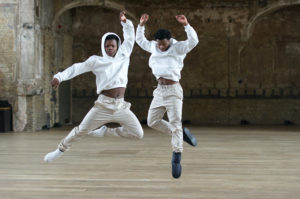Toronto’s Fall for Dance North anchors the season - Vancouver Ballet Society
- Home
- City Reports 2020 - 2023
- Toronto’s Fall for Dance North anchors the season

By Michael Crabb
The biggest single event of the 2021 Fall For Dance North Festival, September 11 to October 29, was the screening before a live 450-member audience in Toronto’s 3,200-seat Meridian Hall of a triple bill of films called Signature Program — this despite the fact that according to recently eased public health mandates the performances could have been live and sold to a capacity audience. But who could have predicted that?
Festivals take months if not years of planning. As FFDN artistic director Ilter Ibrahimof and his team looked from the vantage of 2020 at the prospects for a 2021 event, they erred on the side of caution and opted for what Ibrahimof calls “a hybrid” festival, which in fact was mostly delivered as online films or live-streams.

The same was true for Yvonne Ng’s biennial dance: made in canada/fait au canada (d:mic/fac) Festival, which featured a single live outdoor program at an amphitheatre in Toronto’s High Park (the weather mostly co-operated although mosquitos did not), supplemented by podcasts, an inter-active art project, and an expanded six-part series of dance on film and video, curated by Kathleen Smith.
One benefit of a festival that’s not constrained by the rental costs of a live performance venue is that it can spread its wings, as in fact FFDN has increasingly done since its launch in 2015 through a variety of co-production and community outreach initiatives. When FFDN is in full swing there’s not much oxygen left for anything else. The main live component this year was a series of outdoor Heirloom performances beyond Toronto’s borders in nearby Peterborough, Lakefield, Hamilton, and St. Catherines. Each of these comprised a double bill of local performers and, as a constant, the sophisticated duo of American tap/step dancers Caleb Teicher and Nic Gareiss. Teicher returned later in the festival with different collaborators in a different show.
There were also live outdoor showings in downtown Toronto of Together Again, created during a residency at the Orillia Centre for Arts + Culture by jazz-dance maven Natasha Powell and 11 Ryerson University dance students. Additionally, dance devotees and curious passersby could view for free Peggy Baker’s her body as words, a film and sound installation exploring female identity and physicality through nine solos made collaboratively by Baker and dance artists from across Canada. In retrospect, Yonge-Dundas Square — Toronto’s sad version of New York’s Times Square — was probably not the best choice of outdoor venue given the dubious characters it attracts and the routine cacophony of traffic, streetcars, and sirens that even with earphones cranked to the red zone made the online sound score hard to hear.

As for the Signature Program, it paralleled on film what might well have been a typical FFDN live mainstage performance in that it featured works spanning a diversity of styles and scales. In terms of scale, the largest was Cuba’s Malpaso Dance Company in Bloom, a FFDN-commissioned work by Canadian-born Aszure Barton. For particularity of style and precision of execution the prize went to India’s Nrityagram Dance Ensemble. For unfettered physicality it would have been hard to beat Mthuthuzeli and Siphe November in the former’s My Mother’s Son. The brothers’ now well-known backstory — impoverished childhoods in a segregated South African community to dancing fame in London (Mthuthu, with Ballet Black) and Toronto (Siphe, National Ballet of Canada) — only added to the emotional wallop of their first collaboration as professional adult dancers.
All three films were directed by Delhi-born, Toronto-based Vikram Dasgupta, who had to direct the Novembers in London remotely from India via Zoom because COVID travel restrictions locked him out of Britain. Then, he almost got arrested in Havana for trying to film some everyday street scenes from the back of a car.
Multi-award-winning Barbara Willis Sweete, renowned for her performing arts films, was assigned to what was perhaps FFDN’s most engagingly adventurous offering, a live-streamed performance from Harbourfront Centre of More Forever. The hour-long collaboration between two outrageously gifted young artists, composer/pianist Conrad Tao and, in his now third FFDN appearance, choreographer/dancer Caleb Teicher, defied expectation. Tao, 27, is an internationally travelled concert pianist. His own compositions, while betraying his musical inspirations, might be best described as non-derivative. Teicher, 28, is already a renowned master of jazz, tap, and a range of vernacular social dances of the swing era. What they concocted for a 2019 Guggenheim Works & Process commission is almost a meditation on life itself, its joys and sorrows, its meetings and partings, its unavoidable finitude. Tao at his Steinway and Teicher and his company, whether dancing full-throttle or gently shuffling on a sanded stage, are utterly un-showy. More Forever has an intimacy at once disarming and beguiling.

As in many parts of Canada, current public health directives are allowing capacity indoor audiences for fully vaccinated patrons. The National Ballet, which performed to a live but very socially distanced audience outdoors in the summer, had planned on only being able to accommodate about 1,000 people for its November season at Toronto’s 2,100-seat Four Seasons Centre. When it first announced it had found a safe way to present The Nutcracker this December, the company was still looking at limited capacity. As has happened so frequently during this pandemic, the rules have changed quite unexpectedly but now to everyone’s relief and advantage. What remains uncertain is people’s willingness, even with masks and vaccines, to return to theatres in droves; yet, if scenes of packed fans at Toronto Raptors’ games are any indication, they most probably will.

